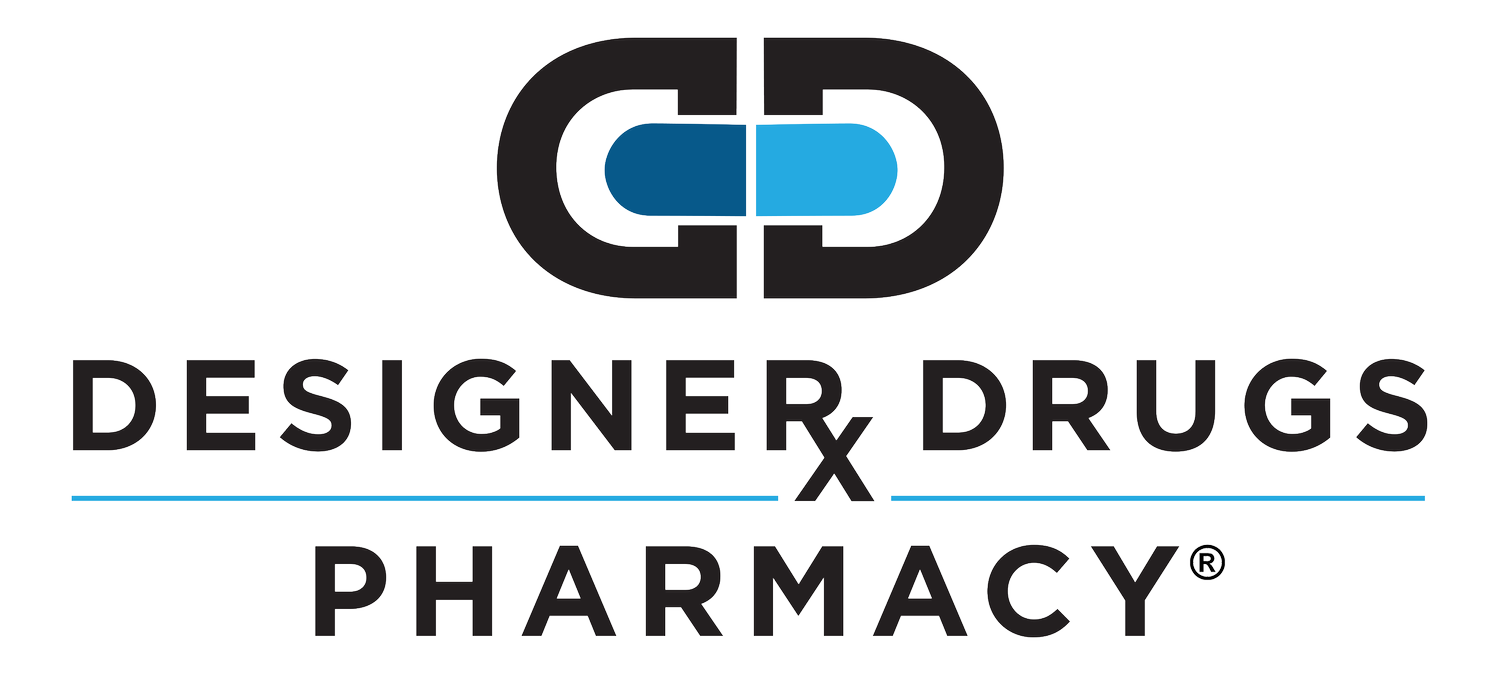Compounding 101
Almost five years ago, I told my family and friends that I accepted a job as a compounding pharmacist. Previously, I spent my professional life in a traditional, “big box” community pharmacy. I really loved helping patients, but I was beginning to feel more used than useful, and I needed a change. I dropped off my resume at Designer Drugs, aced my interview (I like to think), and the rest is history.
I remember “brushing up” on my compounding notes and lectures from school and feeling mostly prepared for my first day of work here. All pharmacists are taught compounding in school, and I never missed a class. I did well in the practical assessments (I remember being particularly proud of an emulsion I made by hand that didn’t separate). But by six o’clock on that day, I had come to the definitive realization that pharmacy school compounding is not the same as pharmacy compounding. I texted my pharmacy school friends: “What the heck is an unguator?” “Do you remember alligation calculations?” “Please send help.” Spoiler alert: help did not arrive. Most of my friends were hospital pharmacists; they can definitely tell you all the “smart people” things you want to know about hospital pharmacy, but unguator antics… not so much. So I did what every pharmacist does when they don’t know the answer: I researched obsessively. As I learned more, I had more questions. And as I answered those questions, I had more questions. Today, I’m still in the same research/question cycle, but I have infinitely more answers than I had on day one. Pharmacy – in all its forms – is a lifelong pursuit of ever changing, always evolving knowledge. I’ll never have all the answers, but I’m certainly going to try.
All of that to say: if a compounding pharmacist has questions about compounding, I’m sure my patients have questions about compounding. I’m going to start with just the basics today, but (as always) please reach out if your questions aren’t answered here or if – like me – when you answer one question, you generate another.
1. What is compounding? Is it like drug manufacturing?
Compounding and manufacturing are not the same. Compounds are made individually pursuant to an specific patient need; you can usually only find compounds at compounding pharmacies. Manufacturing produces bulk drug products – these are the products you’ll get at traditional retail pharmacies. Compounding pharmacies meet patient needs that are not met by traditional manufactured products. For example, estradiol vaginal cream is manufactured at 0.01%; however, a patient and her provider may decide they want a higher strength than 0.01%. At this point, the medication would be compounded pursuant to a unique prescription.
2. How are compounding pharmacies regulated?
Compounding pharmacies are regulated by their state boards of pharmacy. However, most compounding pharmacies and state boards of pharmacy follow guidelines set forth by the United States Pharmacopeia (USP). USP provides documents detailing non-sterile, sterile, and hazardous drug compounding. These are all living documents and are subject to change throughout the years.
3. Do compounding pharmacists have special training?
It depends. There are no “rules” that state that compounding pharmacists must have additional training beyond the scope of what we learn in pharmacy school. Additional training is at the discretion of the compounder and the company they work for. All pharmacists at Designer Drugs have additional training in various compounding subjects depending on our job roles and interests. I have additional training in subjects like sterile compounding, air flow dynamics, and cleanroom environments.
4. How do I know if my medication (or my patient’s medication) should be compounded?
Ask! Medications can be compounded for a multitude of reasons: allergies, intolerances, and lack of commercial availability (just to name a few). We make progesterone capsules without peanut oil for patients with peanut allergies. We make combination products – like tretinoin/niacinamide or estradiol/estriol – for patients whose needs are not met by traditional medications. If you’re wondering if a medication could or should be compounded, please call us anytime.
TAYLOR ASHTON joined our team as a pharmacist in 2017. She works predominantly in the compounding lab, ensuring we are compliant with best-practice guidelines. Originally from Chattanooga, Taylor attended Baylor before earning her PharmD from St. Louis College of Pharmacy. (Go Blues and Cardinals!) She is a newlywed with four dogs, and she also enjoys spending time with her mom, dad, and niece, and watching "Jeopardy.”
